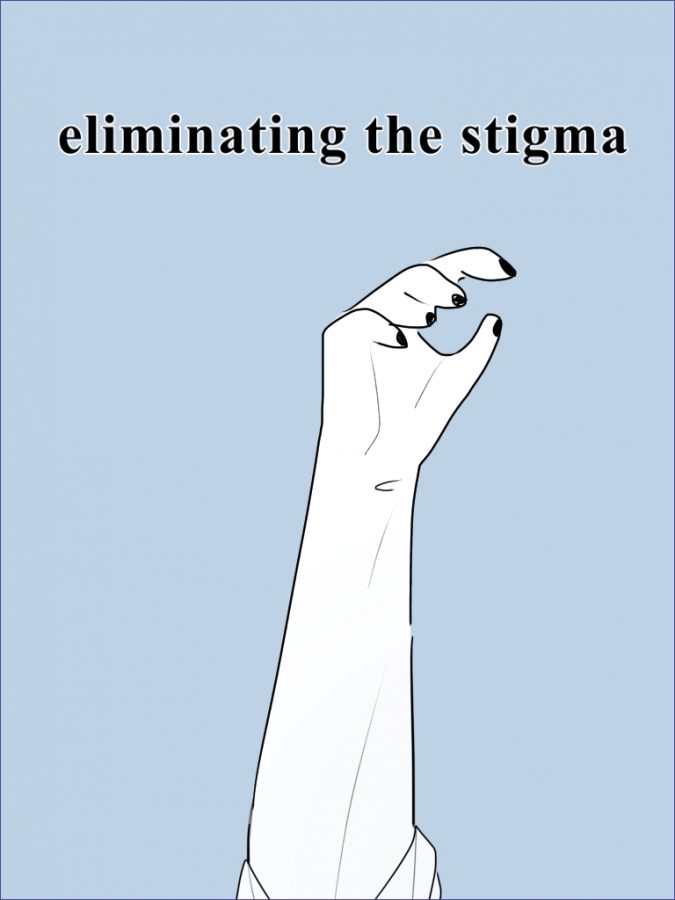NSSI – Eliminating The Stigma Behind Self-Harm
Trigger warning – This article goes into detail about a condition called NSSI (non-suicidal self-injury). If you’re triggered by or affected by the mention of symptoms and signs of NSSI, do not continue. If you are or know somebody who is affected by NSSI, don’t hesitate to contact a parent or trusted adult. NSSI is a dangerous and rapid condition that can be lethal if not treated.
The stigma surrounding self-harm is one that is great and needs to be addressed in order to heal.
Introduction – What is NSSI?
NSSI (non-suicidal self-injury), is a condition in which somebody purposefully enacts physical pain onto themselves as a means to cope. NSSI can range from cutting, burning or hitting one’s skin. Reasons people use NSSI to cope can range from a release from anxiety, a desire to punish oneself or a physical sensation to feel something. Most often people with mental disorders, like anxiety and depression, use NSSI to cope, and while it’s most common in adolescents and young adults, anybody can suffer from NSSI.
Why Do People Self-Harm?
A question that people often have to those who self-harm is why. Why physically damage or jeopardize your body just because you feel bad? Why resort to extremes when there are other ways to cope? While it isn’t exactly simple, there’s a lot of reasons that people self-harm. An overwhelming feeling of anxiety or depression often leads us to seek a way to express this emotion when it feels impossible to tackle. While people cope in different ways, healthy or not, self-harm feels like a way to get out these feelings for a lot of people.
Physical pain washes out emotional pain, and despite how incredibly dangerous this method of coping is, it serves as a release. Another reason people may self-harm is a need for punishment. To hurt themselves is to punish themselves for a mistake or an issue. Self-harm is a release from guilt as well, when inflicting pain on yourself feels deserved or necessary. Punishment is often something people who self-harm use to justify this toxic behavior, sincerely believing things like, “I deserve it”, regardless of if they truly do deserve it or not.
Finally, people may harm themselves to feel something. A common symptom of depression is mental numbness and can factor into why a person may hurt themselves. If a person is emotionally empty, physical pain causes them to feel something. The danger behind this behavior is how addicting the feeling is. Whether it be a release, a punishment or a need to feel, NSSI can rapidly develop from a way to cope to dependence, and even in some cases, to an addiction.
My Experience
Experiences with NSSI can be vastly different based on a variety of factors, but sharing mine feels important to show that anyone can struggle with this. I’ve been using NSSI to cope since I was 13, and continue to struggle now, at age 16. It didn’t feel like anything more than a one-off way to cope when I felt I deserved it until I was 15. When I began the use of cutting more often to cope, it became more than just that.
I felt like I had to cut to feel right, and it became a struggle to go longer than a day without indulging in this self-destructive behavior. Even now, in recovery, the threat of relapse looms over me in my day-to-day activities. I feel like any small slip could lead back to it. It became more than a way to cope and transformed into something I couldn’t live without. I lost sleep and energy, I felt increasingly worse regarding my self-image, and thoughts of suicide increased much more than before I cut regularly.
I was sitting in therapy with my parents when my Dad told me something. He said, “I don’t want to see something and wonder if you’re hurting yourself with it. I don’t want to have to check your bags.”
When he said that to me, I knew I needed to recover. I knew it wasn’t just for me anymore. It was for him, for my Mom, for everyone who cared about me.
Lessening the Low
Why do people get addicted to NSSI? While the severity varies from person to person, self-harm is a unique and distinct feeling. However a person may hurt themselves, it’s not easy to stop once you’ve already started hurting yourself. The feeling is hard to replicate, but there are ways to lessen the low.
Other Ways to Cope
- One alternative is to use ice on the place you want to hurt yourself or take a cold shower. The cold sensation provides a sudden sensation similar to the effect of self-harm but is much less destructive and safer. While this technique can run the risk of bruising from ice, it’s generally a better way to lessen the blow of self-harm urges.
- Another method is to snap a rubber band against your wrist, a lighter and less dangerous way to deal with a desire to feel some kind of pain. This method shouldn’t be used too often, though, because bruising or damaging your wrist by consistent use could be dangerous.
- Lastly, writing or scribbling with a red or colored marker can help with urges. Write or draw where you wish to hurt yourself, and let it serve as a work you wouldn’t want to see damaged. An associated method with the use of markers is the Butterfly Method, where you draw small butterflies where you wish to hurt yourself and write the names of loved ones in them. The end goal is to ‘keep the butterflies alive’, by not hurting where they’re drawn.
- Other general coping mechanisms include journaling, venting to someone you trust, listening to music, yelling into a pillow or squeezing a stress ball.
Riding The Wave to Recovery
There are also several apps designed specifically for those who self-harm. The app Calm Harm, available and free on Google Play and the App Store, is an app designed to ‘ride the wave’ of self-harm urges. The app has five categories – comfort, distract, express yourself, release and breathe. Within these categories, there are specific activities that range from a minute to five minutes long. The app also has a journal section and a direct link to several sources such as the National Suicide Prevention Hotline and the Safe Place Hotline. Calm Harm, while designed for those who self-harm, can be used by anyone needing a distraction or a breather.
The second app, in contrast, is specifically for those getting over an addiction. I Am Sober is an app available on Android and iOS that tracks self-harm through a timer. The app has several different milestones, a pledging system and a community of people who can encourage and interact with one another. I Am Sober, while specific to those getting over an addiction, is very good in its ability to allow people to communicate and support each other.
How to Help
From an outside perspective, it’s hard to understand why someone would want to harm themselves. It’s even harder to deal with the grief and worry that can come with this. What’s most important to understand is that they aren’t choosing to do this. Self-harm, while it is a choice to act on, it’s not at all an easy one to resist.
The best thing you can do is listen and provide a safe environment for them. Self-harm is often a result of anxiety and depression, and having someone to vent to can make a huge difference. Secondly, don’t get frustrated or blow up at them if they relapse or fail to make it to the desired goal. Recovery is a process and often isn’t steady or consistent. There’s gonna be times where they fall, and the most vital thing you can do is be there for them. Finally, even if it feels like a betrayal of trust, self-harm is a dangerous thing that can’t be kept a secret.
If you feel a person is in danger, tell a trusted adult. Oftentimes people who harm don’t want to get better for varying reasons, but it is important that you be there for them and understand if it gets to a point where their life and wellbeing are at risk, you tell someone you can trust.
Conclusion – Eliminating the Stigma
Fifteen to twenty percent of adolescents and six percent of adults struggle with the brutal battle of NSSI. Self-harm is one of the many brutal coping mechanisms people use to cope with mental disturbances and is shockingly common, yet is rarely addressed. What does this mean? There’s been a serious stigma considering self-harm, leading many to keep it to themselves in the fear that they’ll be judged. Eliminating the stigma surrounding self-harm would allow more people to feel comfortable coming out with their experiences.
Understanding what self-harm is and why people struggle with is the first step, followed by providing safe spaces and care for those who self-harm. Since the burst of studies and research in the early 2000s, the stigma around self-harm has decreased drastically, and now that more people have access to this information it’s likely that we can take down these numbers.
Eliminating self-harm as a concept is impossible, but eliminating stigma and judgment is.











